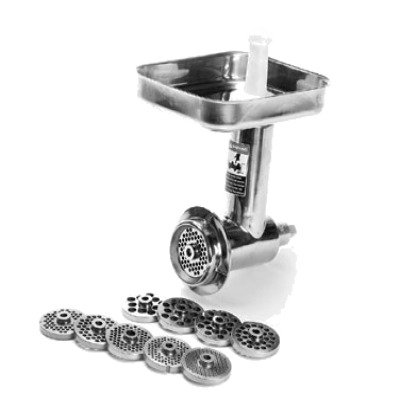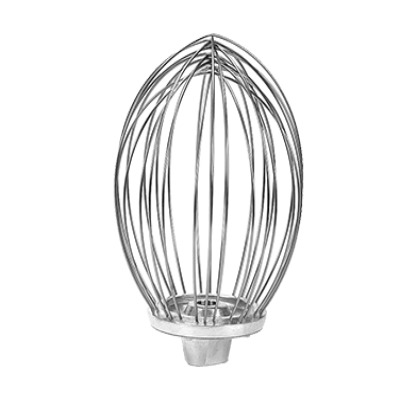While nobody really likes to think about their garbage, how you manage your waste is critical to the overall function of your foodservice operation and a commercial food waste disposer can have a very positive impact on the efficiency of your commercial kitchen operation. When I was a kid, my older brother explained to me the concept of building up the performance of a car motor, and I have found the ‘concept’ can be applied to all kinds of ‘systems’. In very simple terms, he explained that to increase performance, you first need to add power but that this will only take you so far. After you take that to a certain level, you need to improve the exhaust. For any car people, I think the question he was answering was ‘why do you add headers to a car?’ This was a long time ago. The idea is that you need to remove the waste or output at a rate that’s consistent with the input (power), so the system keeps flowing smoothly. A commercial kitchen operates the same way. And as you serve a greater number of customers, the greater the amount of food waste you’re going to need to remove from your operation.
There will always be food scraps and dirty dishes in a hotel, hospital, school cafeteria or campus dining hall that needs to be discarded. There’s typically a scrapping station before the dishmachine. Using a commercial food waste disposer, like the Insinkerator SS-100 Disposer or the Salvajor 100 Commercial Disposer, can make this area more efficient and reduce the amount of solid waste you need to discard. A commercial food waste disposer is an economical solution to reducing your restaurant or cafeteria food waste and it will save you labor and time.
How do commercial disposers work?
Most disposers are connected to the sewage system and as plates, trays or other dirty dishes are rinsed off, food that was left on the dishes goes down the drain to the disposer and is ground up and flushed away down the drain. There are also garbage disposers that reduce the food waste significantly by grinding it up but then store the dried food waste in a removable container which can be composted and used to enrich soil. Throughout the process, these disposers will greatly reduce the mass and volume of the food waste by grinding it down and using water.
What are the different types of commercial food waste disposers?
1. Disposer with Sink - this is a complete unit that can be installed into your commercial kitchen. A food waste collector comes with a large sink, disposal, and console to operate the unit. A commercial faucet needs to be added and the unit needs to be connected to the sewage line. Most food waste collectors like this recirculate the water that is utilized to break down the food waste to help reduce the amount of water utilized in the process.
2. Disposer Without Sink – a commercial food waste disposer without a sink will resemble a comparable unit for home use, except in size and horsepower. It will be larger and more powerful than a residential model, but it also needs to be connected under a sink in your commercial kitchen. It is important to select a disposer that can be connected to the brand of sink bowl that you have. There are a variety of adapters to ensure that you disposer and sink can be connected properly.
3. Disposer With Collection Bin – this disposer will grind up food waste in water, but then separates the waste and water in a dewatering system. This ‘grey water’ is flushed from the system into the sewage line, but the dry food waste, which is now ground up, gets captured in a bin or tray for removal. The food waste is now reduced in mass from when it entered the disposer, and it is also now in a compostable form. This system is recommended for operations that have sustainability initiatives and where recycling and waste reduction valued.
What types of food waste should or shouldn’t go in a disposer?
While adding a disposer to your operation simplifies dish machine prep, not all types of food waste should go into a disposer. Because a disposer grinds up waste, it is ideal for grinding organic and biodegradable foods. Material like wrappers, napkins, plastic straws, or even disposable flatware should not go into a disposer. Additionally, grease, oils or solid fats can clog the waste plumbing so these should also not be put into the disposer.
Food waste from fruits and vegetables, meats, poultry, breads and grains, bones, trimmings, and seafood can be put down the disposer. Fibrous foods, like artichokes, the top of pineapples and cornhusks, are best kept out of the disposer. Also, oyster and clamshells should be thrown away separately. And as stated earlier, items that aren’t food waste, like cans, silverware, glass, plastic wrap, disposable gloves should not go into a disposer. Additionally, corrosive chemicals should not go into your disposer.
To ensure that items that shouldn’t be put down a commercial food waste disposer are kept out of the unit, it’s a good idea to place a trash can close by the unit. Having a trash can conveniently within reach of the disposer operator makes it much more likely that the materials that should not go into the disposer are discarded into he trays rather than ending up in the grinding chamber of the unit.
Benefits and Challenges of Food Waste Disposal Systems in Commercial Kitchens
A food waste disposer reduces the time and labor involved in clean up and dishwashing. It is simpler and faster to scrap food waste into the sink and wash it down the drain. Additionally, it reduces your garbage waste which means less trips to empty the trash cans and take the trash out of the kitchen, which is a labor savings, and lower costs for hauling away waste. This also saves you space, and in most commercial and institutional kitchen, space is a premium. Using a disposer will also keep food waste out of landfills and if you go with a system that collects the food waste, you can utilize the ground up food waste as fertilizer or compost.
It is important to consider that a quality commercial food waste disposer will be an investment and like any other type of restaurant equipment, it will need regular maintenance. You will need to train your staff to utilize the equipment properly and they will need to take all recommended safety precautions.
Before selecting a food waste disposer for your commercial foodservice operation, be sure to speak to someone at Cook’s to make sure that you get the brand and model that will best suit the needs of your operation. You want to ensure that the model you choose has the appropriate horse-power to accommodate your operations volume. We can also assist you to ensure your unit is properly installed and in the best location to ensure a smooth workflow in your dish washing area.




















